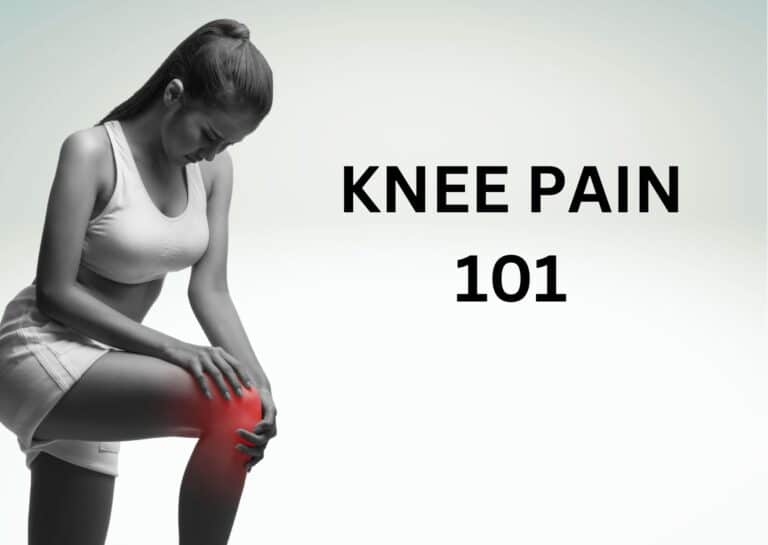Knee pain can be one of the most frustrating issues to deal with for someone pursuing functional goals as it feels as if our age is finally catching up with us. The ‘cracking’ and ‘popping’ sensations associated with sharp pains and dull aches don’t have to be the be all end all when it comes to dealing with your knee pain.
Knee pain is always associated with the joints above and below the knee – the hip and the ankle/foot. The hip is a deep ball-and-socket joint that is one of the most stable joints in the body as it has to provide support and stability for the trunk. The ankle and foot are also one of the more stable joints in the body – acting like a clamp, and we’ve been learning how to balance on our feet since we could walk, literally. However the knee joint, which is in-between these two, relatively more stable weight-bearing joints, is simply two bones on top of each other, and nothing more.

It has ligaments on all sides surrounding the joint to provide support and stability – but this is rarely enough for long-term stability, particularly during sports that have frequent movements involving changes of direction and deceleration/impact forces. Now if there were any issues occurring to the hip or ankle/foot joint in terms of mobility, stability, or your ability to co-ordinate certain positions for these joints, you can imagine how that would cause issues to the knee – an unstable structure that sits between two stable structures, almost like a chink in the armour.
Knee valgus, aka whenever the knee collapses inwards is not a position that is ideal for creating force into the ground to leverage a change in direction. Knee valgus is prevented if the hip muscles (glutes) are strong enough to position the knee under load and also if the foot/ankle is stable enough to balance without collapsing through the arch of the foot. If either one of these actions occur due to overload or instability during jumping, squatting, lunging, bounding – stability of the knee is compromised and most likely ends up in collapsing inwards. If the knee joint is put under this type of load and stress frequently without adequate stability, inevitably this causes inflammation and sensitivity towards these movements and therefore, pain. Chronic knee pain and inflammation over the years if ignored can lead to osteoarthritis and eventually a total knee replacement – something we want to seriously prevent.
Now understanding these biomechanics underlying knee pain, to prevent this from occurring or to manage knee pain, we need to:
What this means is that all knee pain, as general as it may seem, has a very specific underlying cause that needs to be identified with certain assessments to the hip or ankle/foot. Never settle for a general diagnosis – come down and see us at Sydney Sports Physio and Fitness and we’ll figure your knee issues out asap so you can continue enjoying achieving your functional goals.
The best sports physiotherapy clinics in Sydney CBD, with two fully equipped rehab gyms specifically designed for long lasting results. Schedule an appointment today.